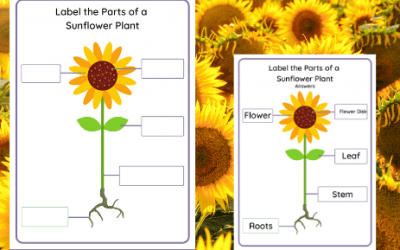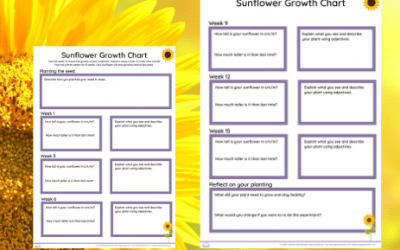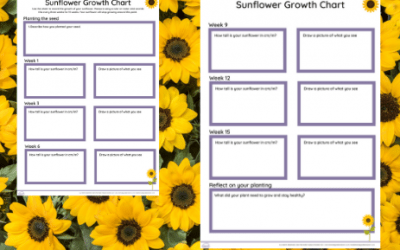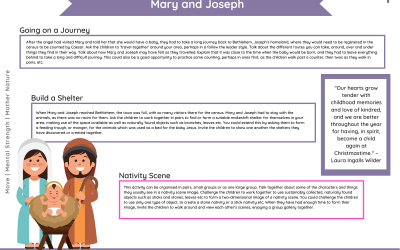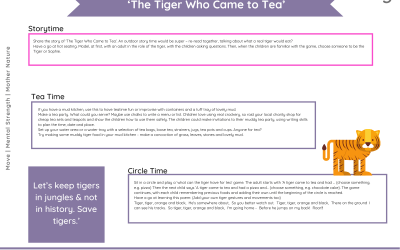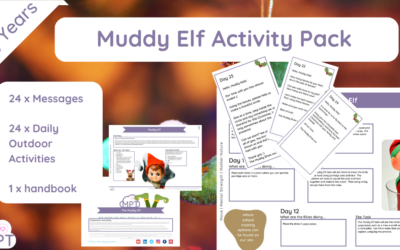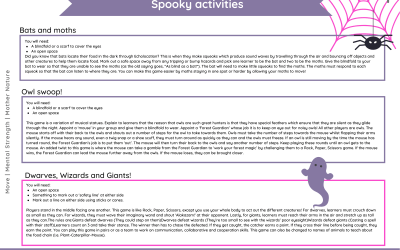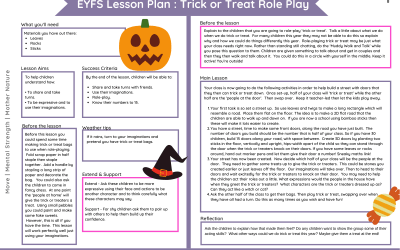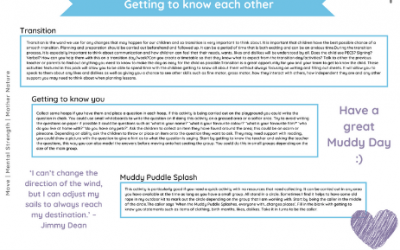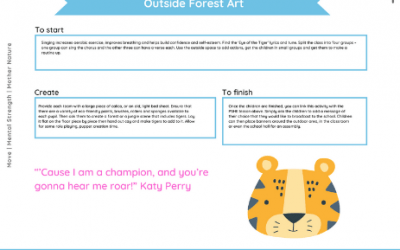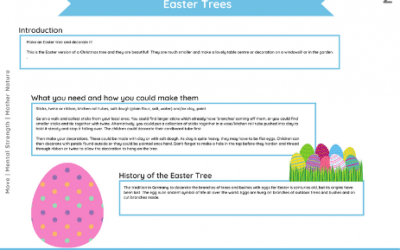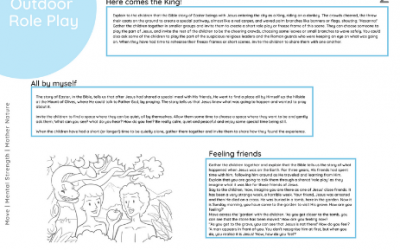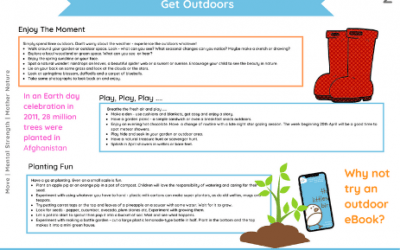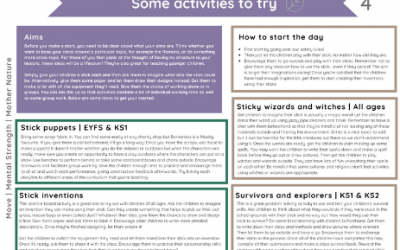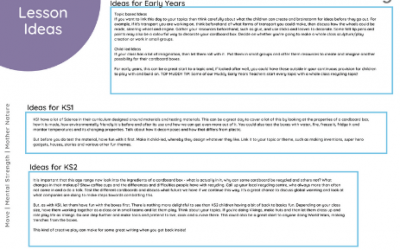Exploring Sunflowers: Teaching with Outdoor Activities Sunflowers are not only vibrant and beautiful but also offer a...
Sunflower Day Growth Chart KS2
Apr 11, 2021
Enjoy using this KS2 Growth Chart resource on Sunflower Day so that the children can record the height and observe...
Sunflower Day Growth Chart – EYFS/KS1
Apr 11, 2021
EYFS/KS1 - Enjoy using this resource on Sunflower Day so that the children can record the height and observe their...
Nativity Ideas Pack (Take it Outside!)
Dec 9, 2020
Use Nativity ideas pack to use natural resources and take the learning of this area outside. There is something...
World Tiger Day EYFS (Ideas Pack)
Dec 7, 2020
World tiger day EYFS is a very important day to raise awareness of the beautiful animal that is the tiger. ...
World Tiger Day EYFS
Dec 7, 2020
World Tiger Day EYFS by Muddy Teacher Beth World tiger day is a very important day to raise awareness of the beautiful...
Muddy Elf (Nursery&School Pack)
Nov 30, 2020
Use this incredibly innovative and creative Muddy Elf Ideas Pack to get your children outside daily to enjoy an Elf...
Horrible Halloween Lesson Ideas Pack
Oct 22, 2020
Use our Horrible Halloween Ideas Pack to get lots of ideas and ways to make Halloween special in your class.
Halloween Trick or Treat Lesson Plan
Oct 22, 2020
Use Halloween Trick or Treat Lesson Plan to get role play, speech and language into one outdoor learning lesson!
UKS2 Transition Ideas Pack
Sep 9, 2020
Use UKS2 Transition Ideas Pack to help your class settle into a new year group The Muddy Puddle Teacher way!
World Tiger Day KS2
Sep 9, 2020
Use World Tiger Day KS2 to embrace all that is wonderful about Tigers. From outdoor art to poetry this pack has all the muddy puddle fun you need!
*FRee*Outdoor Learning Dates Poster
Sep 6, 2020
Join in with some Outdoor Learning Days to keep the momentum going and have this Outdoor Learning Dates Poster 20/21...
KS2 Easter Art
Jul 23, 2020
Encourage those budding artists to take their art outside using natural resources. Use Easter ART KS2 to get creative with Easter.
KS1 Creation story
Jul 23, 2020
Why not try Outdoor Learning Creation Story to get your RE lessons more active, outside, muddy and messy! This pack is full of innovative ideas you will not get anywhere else!
EYFS Earth Day
Jul 23, 2020
Earth Day EYFS
EYFS Superhero Day
Jul 23, 2020
Superhero Day EYFS
Bring a Stick to School Day (Whole School Pack)
Jul 17, 2020
Bring a Stick to School Day School Pack.
Cardboard Chaos Day (Whole School Pack)
Jul 17, 2020
Do you want to shed some light on imagination and creativity skills in your school? This pack will help you set up, organise, engage parents, give key stage ideas so you can make the most out of World Cardboard Chaos Day on 13th January 2020. Or do it another day!
New In

Meet the Weather by Caryl Hart (20 Outdoor Activities)
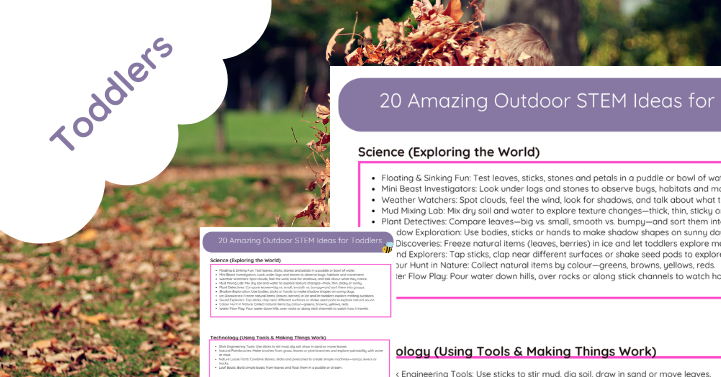
20 Amazing Outdoor STEM Ideas for Toddlers
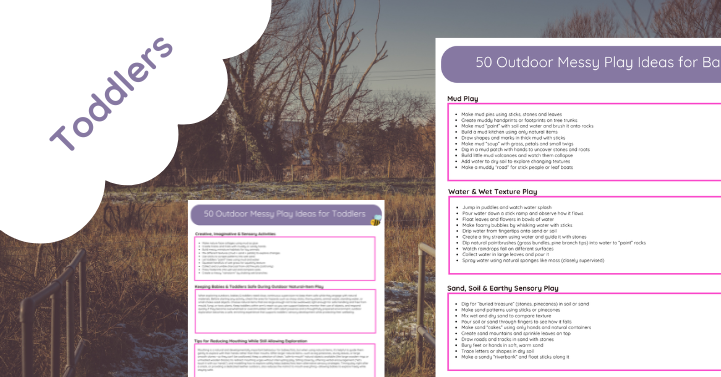
50 Outdoor Messy Play Ideas for Toddlers Using Natural Items
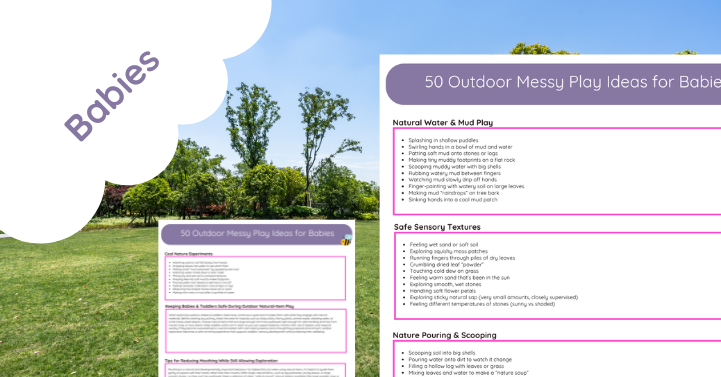
50 Outdoor Messy Play Ideas for Babies Using Natural Items
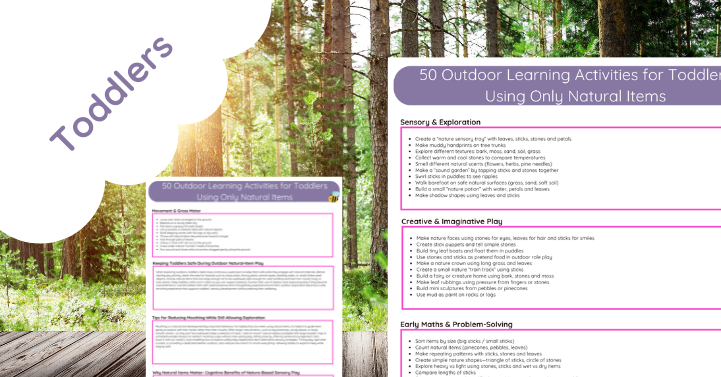
50 Outdoor Learning Activities for Toddlers Using Only Natural Items
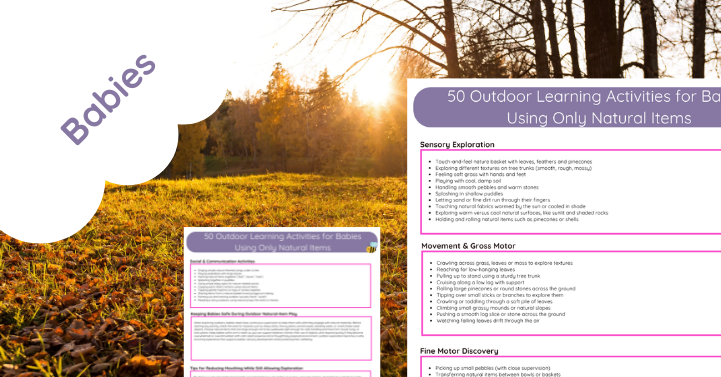
50 Outdoor Learning Activities for Babies Using Only Natural Items
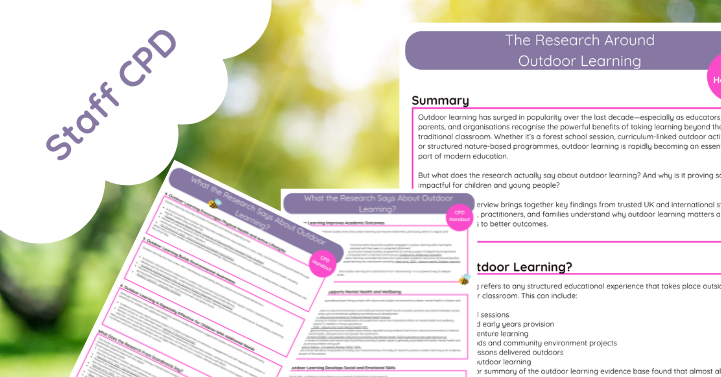
The Research Around Outdoor Learning (CPD Handout)

CPD Handout: What Scandinavian Countries Do to Support SEND Children

Forest School Story-Linked Lesson Ideas



